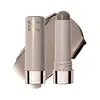What's inside
What's inside
 Key Ingredients
Key Ingredients

 Benefits
Benefits

 Concerns
Concerns

 Ingredients Side-by-side
Ingredients Side-by-side

Isodecyl Isononanoate
EmollientSilica
AbrasiveSynthetic Wax
AbrasiveOctyldodecyl Stearoyl Stearate
EmollientC12-15 Alkyl Benzoate
AntimicrobialEthylhexyl Isononanoate
EmollientMicrocrystalline Wax
Emulsion StabilisingPentaerythrityl Tetraisostearate
EmollientCI 77891
Cosmetic ColorantSynthetic Fluorphlogopite
Caprylic/Capric Triglyceride
MaskingSorbitan Sesquioleate
EmulsifyingPolybutene
Sorbitan Isostearate
EmulsifyingCuprous Oxide
Skin ConditioningChromium Hydroxide Green
Tocopheryl Acetate
AntioxidantGlyceryl Caprylate
EmollientStearalkonium Hectorite
Gel FormingFerric Chloride
AstringentCaprylyl Glycol
EmollientIsopropyl Titanium Triisostearate
EmollientPropylene Carbonate
SolventLimnanthes Alba Seed Oil
Skin ConditioningEthylhexylglycerin
Skin ConditioningAluminum Hydroxide
EmollientWater
Skin ConditioningArginine/Lysine Polypeptide
Skin ConditioningBHT
AntioxidantTocopherol
Antioxidant1,2-Hexanediol
Skin ConditioningSodium Hyaluronate
HumectantSorbic Acid
PreservativeIsodecyl Isononanoate, Silica, Synthetic Wax, Octyldodecyl Stearoyl Stearate, C12-15 Alkyl Benzoate, Ethylhexyl Isononanoate, Microcrystalline Wax, Pentaerythrityl Tetraisostearate, CI 77891, Synthetic Fluorphlogopite, Caprylic/Capric Triglyceride, Sorbitan Sesquioleate, Polybutene, Sorbitan Isostearate, Cuprous Oxide, Chromium Hydroxide Green, Tocopheryl Acetate, Glyceryl Caprylate, Stearalkonium Hectorite, Ferric Chloride, Caprylyl Glycol, Isopropyl Titanium Triisostearate, Propylene Carbonate, Limnanthes Alba Seed Oil, Ethylhexylglycerin, Aluminum Hydroxide, Water, Arginine/Lysine Polypeptide, BHT, Tocopherol, 1,2-Hexanediol, Sodium Hyaluronate, Sorbic Acid
Isodecyl Isononanoate
EmollientSilica
AbrasiveC12-15 Alkyl Benzoate
AntimicrobialOctyldodecyl Stearoyl Stearate
EmollientIsodecyl Neopentanoate
EmollientDicalcium Phosphate
AbrasiveMethyl Methacrylate Crosspolymer
Synthetic Wax
AbrasiveLimnanthes Alba Seed Oil
Skin ConditioningPolyethylene
AbrasiveSynthetic Fluorphlogopite
Diamond Powder
AbrasiveLauroyl Lysine
Skin ConditioningPersea Gratissima Oil
Skin ConditioningTheobroma Grandiflorum Seed Butter
Skin ConditioningOrbignya Oleifera Seed Oil
EmollientTocopherol
AntioxidantTocopheryl Acetate
AntioxidantPentaerythrityl Tetra-Di-T-Butyl Hydroxyhydrocinnamate
AntioxidantPolymethylsilsesquioxane
Iron Oxides
CI 77891
Cosmetic ColorantCI 42090
Cosmetic ColorantIsodecyl Isononanoate, Silica, C12-15 Alkyl Benzoate, Octyldodecyl Stearoyl Stearate, Isodecyl Neopentanoate, Dicalcium Phosphate, Methyl Methacrylate Crosspolymer, Synthetic Wax, Limnanthes Alba Seed Oil, Polyethylene, Synthetic Fluorphlogopite, Diamond Powder, Lauroyl Lysine, Persea Gratissima Oil, Theobroma Grandiflorum Seed Butter, Orbignya Oleifera Seed Oil, Tocopherol, Tocopheryl Acetate, Pentaerythrityl Tetra-Di-T-Butyl Hydroxyhydrocinnamate, Polymethylsilsesquioxane, Iron Oxides, CI 77891, CI 42090
 Reviews
Reviews

Ingredients Explained
These ingredients are found in both products.
Ingredients higher up in an ingredient list are typically present in a larger amount.
C12-15 Alkyl Benzoate is made up of Benzoic Acid and long chain alcohols. It has a low molecular weight.
C12-15 Alkyl Benzoate is an emollient and texture enhancer. Due to its solubility, it is often used in sunscreens to help evenly distribute active ingredients.
As an emollient, C12-15 Alkyl Benzoate helps soften and hydrate your skin. Emollients create a film on your skin that traps moisture within.
This ingredient has been reported to cause eye irritation.
Learn more about C12-15 Alkyl BenzoateCi 77891 is a white pigment from Titanium dioxide. It is naturally found in minerals such as rutile and ilmenite.
It's main function is to add a white color to cosmetics. It can also be mixed with other colors to create different shades.
Ci 77891 is commonly found in sunscreens due to its ability to block UV rays.
Learn more about CI 77891We don't have a description for Isodecyl Isononanoate yet.
Limnanthes Alba Seed Oil is the oil extracted from the seeds of the meadowfoam plant. This oil is non-fragrant and is an emollient. As an emollient, meadowfoam seed oil helps soften and hydrate the skin.
Meadowfoam seed oil is stable and has a long shelf life due to its chemical structure. It has the highest concentration of stable fatty-acids among plant oils, preventing it from degrading once exposed to oxygen.
Due to the fatty acid content, this ingredient may not be fungal-acne safe.
Meadowfoam is native to California and Oregon.
Learn more about Limnanthes Alba Seed OilOctyldodecyl Stearoyl Stearate is created from stearic acid.
It is an emollient and thickens the lipid (oil) portion of a product. Due to its emollient properties, it may not be fungal-acne safe.
Silica, also known as silicon dioxide, is a naturally occurring mineral. It is used as a fine, spherical, and porous powder in cosmetics.
Though it has exfoliant properties, the function of silica varies depending on the product.
The unique structure of silica enhances the spreadability and adds smoothness, making it a great texture enhancer.
It is also used as an active carrier, emulsifier, and mattifier due to its ability to absorb excess oil.
In some products, tiny microneedles called spicules are made from silica or hydrolyzed sponge. When you rub them in, they lightly polish away dead skin layers and enhance the penetration of active ingredients.
Learn more about SilicaSynthetic Fluorphlogopite is the synthethic version of mica. It consists of fluorine, aluminum and silicate.
Synthetic Fluorphlogopite is used to add volume to products.
It is considered non-irritating on the skin.
Learn more about Synthetic FluorphlogopiteSynthetic Wax is created from fossil fuels such as natural gas. It is used to enhance texture, adjust pH, and as an occlusive.
It may also be used as an abrasive ingredient to exfoliate the skin.
Synthetic Wax may not be fungal acne safe.
Learn more about Synthetic WaxTocopherol (also known as Vitamin E) is a common antioxidant used to help protect the skin from free-radicals and strengthen the skin barrier. It's also fat soluble - this means our skin is great at absorbing it.
Vitamin E also helps keep your natural skin lipids healthy. Your lipid skin barrier naturally consists of lipids, ceramides, and fatty acids. Vitamin E offers extra protection for your skin’s lipid barrier, keeping your skin healthy and nourished.
Another benefit is a bit of UV protection. Vitamin E helps reduce the damage caused by UVB rays. (It should not replace your sunscreen). Combining it with Vitamin C can decrease sunburned cells and hyperpigmentation after UV exposure.
You might have noticed Vitamin E + C often paired together. This is because it is great at stabilizing Vitamin C. Using the two together helps increase the effectiveness of both ingredients.
There are often claims that Vitamin E can reduce/prevent scarring, but these claims haven't been confirmed by scientific research.
Learn more about TocopherolTocopheryl Acetate is AKA Vitamin E. It is an antioxidant and protects your skin from free radicals. Free radicals damage the skin by breaking down collagen.
One study found using Tocopheryl Acetate with Vitamin C decreased the number of sunburned cells.
Tocopheryl Acetate is commonly found in both skincare and dietary supplements.
Learn more about Tocopheryl Acetate